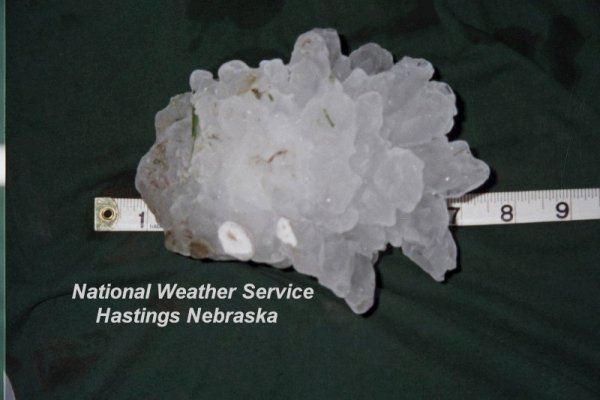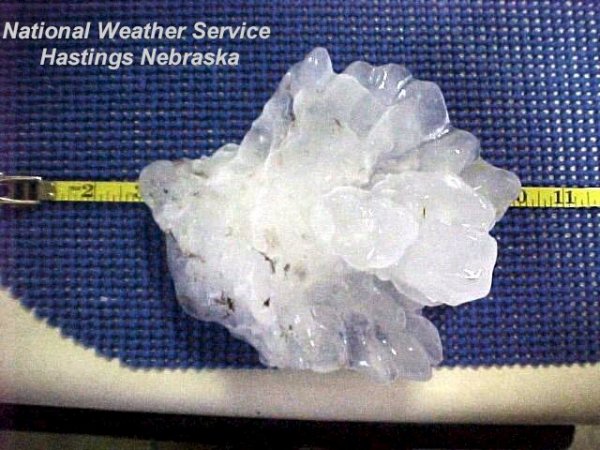
Giant hail is most common in the Great Plains during severe weather season. In general, a giant hail stone is one that is greater than 4 inches in diameter. A very intense updraft of a supercell thunderstorm is required to get hail to this size. Giant hail is not as circular in size as compared to smaller hail stones. This is because irregularities of a smaller size hail stone are exacerbated as the hail stone gets bigger. Also, smaller hailstones can merge onto a bigger hailstone. When this happens the hail stone will have bulges and will have a larger diameter in certain directions. In addition, giant hail stones impact the earth's surface with a great force. This force can distort the shape of the hail stone. The following two images are of hail stones that fell in Aurora, Nebraska on June 22, 2003. Notice the irregular shape of the hail stones. When a hail stone is sliced in half it is common to notice hail rings. These rings are alternate shades of white. The whiter rings (soft ice) are produced by supercooled water and ice crystals coming in contact with the hailstone that is below freezing on the surface while the clearer rings (hard ice) are produced from water that is above freezing that freezes on the surface.   NWS: HASTINGS, NE |